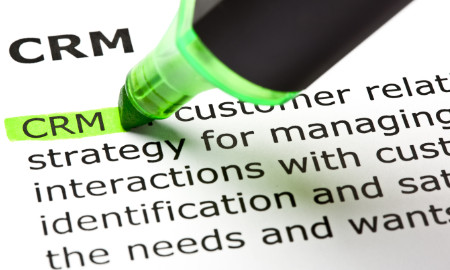Sign up for our free daily newsletter
YOUR PRIVACY - PLEASE READ CAREFULLY DATA PROTECTION STATEMENT
Below we explain how we will communicate with you. We set out how we use your data in our Privacy Policy.
Global City Media, and its associated brands will use the lawful basis of legitimate interests to use
the
contact details you have supplied to contact you regarding our publications, events, training,
reader
research, and other relevant information. We will always give you the option to opt out of our
marketing.
By clicking submit, you confirm that you understand and accept the Terms & Conditions and Privacy Policy
Many firms assume their software costs won’t be a problem because they have maintenance agreements in place with providers and, in many cases, have bought their software licences outright. So why are we hearing more and more stories about firms receiving notifications of huge increases in annual costs or being moved onto subscription licences when they already own a perpetual licence?
We are in the midst of a general trend for vendors to transition customers across to new cloud environments but, as part of this process, some are applying pressure to switch from annual maintenance for products held under an existing perpetual licence to an annual subscription model which includes both the licence and maintenance costs.
Looking at this from the vendors’ perspective, the cost of developing fully cloud-based SaaS (software-as-a-service) solutions is huge. Add to this the cost of maintaining legacy on-premise systems and you can see how the operating costs soon rack up for vendors. To encourage the transition across to the cloud, some vendors are reducing or stopping functional development for on-premise systems so that these fall further and further behind the cloud system over time.
However, if your firm has already purchased perpetual licences, then it doesn’t make sense to move to a subscription model for existing (and no doubt dated) on-premise software. The problem we are finding here is that not all law firms have copies of the original contract, especially where these are from 15 or 20 years ago. Without the contract, it is more difficult to argue about what a perpetual licence entitles you to or any limits on maintenance cost increases.
Here is where Richard Kemp and his team at Kemp IT Law come in...
As Paul says, the first thing is to look at the contract the firm is currently operating under so you can see what you have got. This can be less easy than you think – the contract may have been shoved into the proverbial bottom drawer (i.e. no one knows where it is), people may have moved on, the vendor may have been taken over or the firm may have merged.
But even when you have tracked it down, this may not get you very far as what the firm is actually using today may look very different from what it bought all those years ago. If that was an on-prem, perpetual licence deal, the likelihood is that the firm will still be paying for maintenance annually, typically around 20% of the old perpetual licence fee (plus inflationary rises of at least 5%). When the vendor’s support invoice comes through, it may also have terms and conditions on the back which vary from the original agreement.
So, that is the problem – what is the solution? Cloud or SaaS contracts typically operate as a subscription model where the firm pays a periodical fee (usually monthly) per seat which wraps up, in one charge, all the ‘as a service’ elements – hosting, licencing and support. So the question is how best to switch to this cloud model from the on-premise model.
The initial point is whether you have to think about making that choice right now. This means finding out from the vendor how long you have got with the on-premise system: we are seeing vendors increasingly ‘end of lifeing’ their on-premise systems (i.e. saying support will no longer be commercially available) beyond a set date, typically two or three years out, to ‘encourage’ customers to switch to the cloud.
If you want or have to switch to the cloud, the firm is really blending two sets of commercials which should be addressed in the contract at the same time. First, what is the deal on the cloud? The vendor will give a better price for a longer term deal (which the firm won’t be able to terminate part way through for convenience) and more seats (which generally the firm can increase but not reduce). The vendor may offer tiered support (silver, gold, platinum) at higher prices. If in the cloud the firm is using the vendor’s platform or a third-party platform-as-a-service (PaaS) provider (e.g. Azure or AWS) in place of its own on-premise servers, that will be an extra cost, and maybe an additional contract with the PaaS provider.
The second thing is how much the on-premise service (i.e. the present day value of the balance of the perpetual licence and support) is worth and whether the cloud provider will, in effect, part exchange this for the new cloud service. In our experience, this ends up as a horse trade rather than a detailed financial exercise, but vendors have been receptive to the charge of making firms pay twice for the same thing and as a result been prepared to contra on-premise runoff costs against ongoing cloud costs. At which point, it is back to Paul and 3Kites to wrap things up...
So there you have the contractual options, both for your existing system and to consider for future procurements. One other option here is to switch to a new vendor altogether, although there may be issues with supporting the existing system as you transition across to the new one, getting access to data for conversions, and/or with accessing legacy data in the old system after such a change. It is important to know what your position is before you start this journey and to ensure it doesn’t happen in another 15 years with the new system – even if you aren’t around to help if that time comes!
Paul Longhurst is a director of 3Kites and Richard Kemp is a partner at Kemp IT Law. This is the 25th article in the series Navigating Legaltech.
--------------------
About 3Kites and Kemp IT Law
3Kites is an independent consultancy, which is to say that we have no ties or arrangements with any suppliers so that we can provide our clients with unfettered advice. We have been operating since 2006 and our consultants include former law firm partners (one a managing partner), a GC, two law firm IT Directors and an owner of a practice management company. This blend of skills and experience puts us in a unique position when providing advice on IT strategy, fractional IT management, knowledge management, product selections, process review (including the legal process) and more besides. 3Kites often works closely with Kemp IT Law (KITL), a boutique law firm offering its clients advice on IT services and related areas such as GDPR. Where relevant (eg when discussing cloud computing in a future article) this column may include content from the team at KITL to provide readers with a broader perspective including any regulatory considerations.
Email your news and story ideas to: [email protected]












